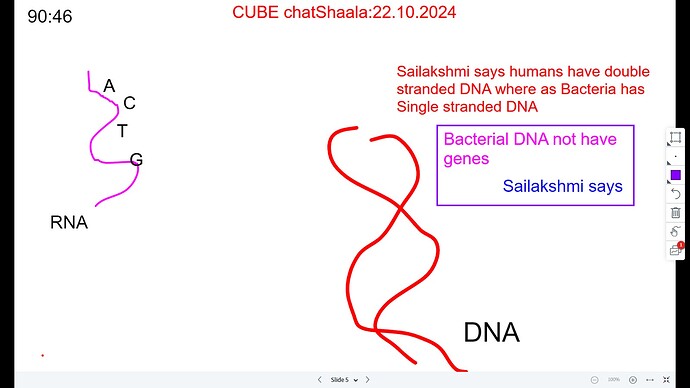This issue is not about any particular person, but we often come across engaging interactive discussions that challenges individual concepts or ideas. By discussing with a wide range of audiences from different ages and backgrounds, these chats help us understand core concepts thoroughly.
One thing I wish is that these kinds of chats and friendly talks in classroom is the easiest ways to convey challenging, sometimes boring topics.
We started Chatshaala with the chlorohydra Send by Sakshi to Kiran, who wishes to establish a culture of chlorohydra in Bageshwar
Sneha, a B.Sc. student from NES Ratnam College, was introduced to chlorohydra by Sakshi. We may be familiar with hydra,but chlorohydra is not as well-known. The presence of symbiotic chlorella, a green algae, in hydra gives it a green appearance.
Then the discussion turned to algae.
What are algae? Are they plants?
We were discussed about prokaryotes and eukaryotes.
We had different opinions about prokaryotes and eukaryotes;
for example, Sailakshmi said that all prokaryotes are unicellular and all eukaryotes are multicellular.
Is that true? Later, we discovered that this is not always the case, and there are exceptions.
Enas and sneha agreed to Sailakshmi that prokaryotes are unicellular,like Amoeba.
The next chat focused on Sailakshmi’s statement:
“Bacteria have single-stranded DNA and humans have double-stranded DNA.”
Is that true? Aditya, Batul, and others shared their opinions.
Another comment was made: “Bacteria do not have any genes in their chromosomes.”
Reference shared in Chatshaala:
[22/10, 9:57 pm] Theertha: An amoeba (/əˈmiːbə/; less commonly spelled ameba or amœba; pl.: amoebas (less commonly, amebas) or amoebae (amebae) /əˈmiːbi/),[1] often called an amoeboid, is a type of cell or unicellular organism with the ability to alter its shape, primarily by extending and retracting pseudopods.[2] Amoebae do not form a single taxonomic group; instead, they are found in every major lineage of eukaryotic organisms. Amoeba - Wikipedia
[22/10, 9:58 pm] Theertha: Myxobacteria are an exception to the rule that all prokaryotes are unicellular, as they have multicellular stages in their life cycles.Myxobacteria are also good models to study the multicellularity in the bacterial world.Myxobacteria - Wikipedia
[22/10, 9:58 pm] Theertha: Example of the eukaryotic organism with expectation: Planctomycetes Frontiers | Keys to eukaryality: planctomycetes and ancestral evolution of cellular complexity
[22/10, 9:58 pm] Theertha: During replication of the bacterial genome, each strand in double-helical DNA serves as a template for synthesis of a new complementary strand. Each daughter double-stranded DNA molecule thus contains one old polynucleotide strand and one newly synthesized strand.Genetics - Medical Microbiology - NCBI Bookshelf.
[22/10, 9:58 pm] Theertha: Also, there are abundant examples of single-stranded DNA (ssDNA) viruses, which include both linear (e.g., parvovirus and densovirus) and more numerous circular forms (e.g., circovirus, nanovirus, and geminivirus; these are also known as Circular Rep-Encoding Single-Stranded or CRESS DNA viruses).
https://www.sciencedirect.com/topics/immunology-and-microbiology/single-stranded-dna-virus#:~:text=Also%2C%20there%20are%20abundant%20examples,Stranded%20or%20CRESS%20DNA%20viruses).
[22/10, 10:02 pm] Theertha: Reference shared in today’s Chatshaala:22/10/2024



